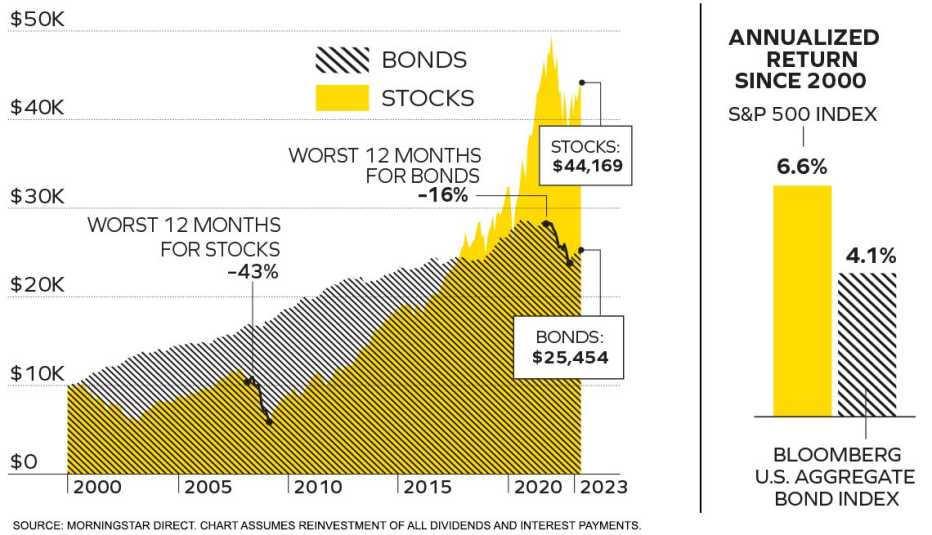Staying Fit


For decades, Americans viewed bonds as safe, stable investments that could help offset the wild rides their other dollars often took in the stock market. Nowadays, not so much. This year’s political battle over the debt ceiling raised the possibility that U.S. government bonds — until recently, arguably the least risky bonds on Earth — might fail to make scheduled payments. And this episode came after 2022’s dismal year for bonds. Last year, the typical “core” bond index fund — the go-to option found in many 401(k) plans — lost 13 percent, according to investment research firm Morningstar. That’s the biggest loss since 1999, when Morningstar started tracking that fund category. The 10-year Treasury bond lost 17.8 percent, its worst return in more than 90 years.


AARP Membership— $12 for your first year when you sign up for Automatic Renewal
Get instant access to members-only products and hundreds of discounts, a free second membership, and a subscription to AARP the Magazine.
Granted, stocks fell even further last year, with the broad market’s total return down 18 percent. But as the markets continue to struggle in 2023, you may wonder what role bonds should play in your finances. Here are answers to eight key questions.
1. What is a bond, anyway?
Quite simply, a bond is a loan an investor makes to a borrower — typically a company or a government agency. If you’re the investor, you receive regular interest payments on the loan; that’s why bonds are called fixed-income investments. A bond has a maturity, or term, which is the amount of time over which it is scheduled to make payments. When the bond reaches maturity, the loan amount, or principal, is returned to you, the investor.
Bonds from U.S. issuers fall into three main categories, based on the borrower: Corporate bonds are issued by companies; municipal bonds, by city and state governments; and government bonds, by the U.S. Treasury or entities affiliated with the federal government. Bonds have different maturities, ranging from weeks to decades. They have different credit quality, or likelihood that the borrower will make the promised payments and return the principal. At the safer end of the spectrum are Treasuries; at the riskier end are high-yield bonds, commonly known as junk bonds, often issued by high-risk private companies. Generally, the greater the risk, the higher the interest paid by a bond.


2. Why did bonds drop in value last year?
After years of low interest rates, the Federal Reserve last year began hiking interest rates to fight inflation. That meant investors could buy newly issued bonds with higher yields. That also meant anyone trying to sell lower-interest-rate bonds before their redemption date had to drop their price to compete with the new, higher yields — hence the 13 percent drop in average value. (At other times, when interest rates fall, older bonds increase in value, since newer issues can’t match their higher rates.)
Despite declines such as the one in 2022, bonds do provide more safety than stocks, which tend to fluctuate more in value. Bonds don’t always zig when stocks zag, but over the long term, holding fixed-income securities does reduce risk and bolster your portfolio. “Even if the market values drop, you continue to earn income on your bonds, which over time makes up for the loss in value. Plus, with high-quality bonds, you can expect to get all your principal back at maturity,” says Julie Virta, a senior financial adviser at Vanguard.




































































More From AARP
Earn 5 Percent Returns While You Sleep
Higher interest rates mean higher yields — where to grab them now
Get Yields of 4 Percent and More With Treasury Bills
You can buy them for free through the government
Investing Rule Number One: Don’t Panic
Inflation and volatility come and go